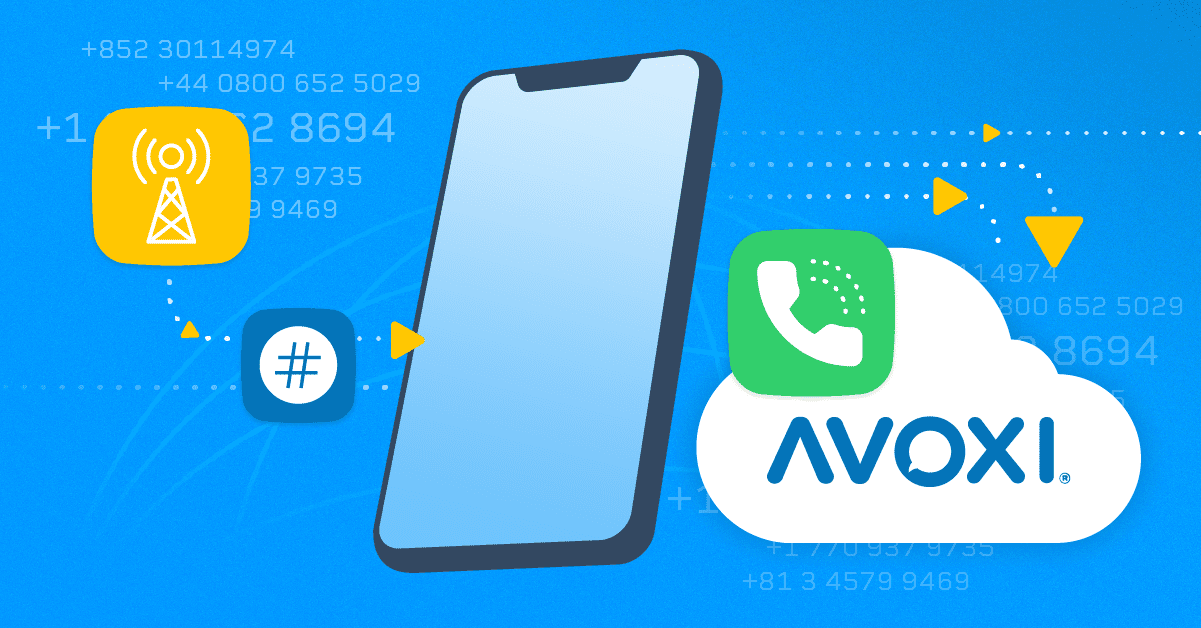SIP Trunking
SIP Trunking
In today's digital age, the way businesses communicate is evolving rapidly, thanks to groundbreaking technologies like SIP trunking.
What is SIP trunking?
What is SIP Trunking, and why is it becoming a buzzword in telecommunications? Let's break it down into simple terms to understand its significance and how it's changing the game for businesses worldwide.
SIP trunking stands for Session Initiation Protocol Trunking. This might sound technical, but the concept is straightforward. SIP trunking is a method that allows businesses to send voice, video, and other communications over the Internet rather than through traditional telephone lines.
It's like upgrading from a single-lane road to a multi-lane highway for your communication needs, offering a faster, more flexible route for your data to travel.
The Role of SIP in Modern Telecommunications
What is SIP, then? SIP is the protocol or set of rules that SIP trunking uses to initiate and manage communication sessions. Whether it's a call between two people, a video conference, or sending instant messages, SIP works behind the scenes to make these interactions smooth and efficient over the Internet.
By adopting SIP trunking, businesses can streamline their communication infrastructure. Instead of juggling multiple lines for voice and internet data, SIP trunking combines everything into a unified system. This simplifies the setup, reduces costs, and enhances the ability to scale as a business grows.
Understanding the Basics of SIP Trunking
Diving deeper into telecommunications, understanding the basics of SIP trunking reveals why it's considered a cornerstone of modern telecom practices.
At its heart, SIP trunking enables businesses to transition from traditional phone systems to more advanced, Internet-based communications. This shift signifies a move towards efficiency and a leap into the future of connectivity.
Practical Applications and Advantages
So, what is SIP trunking used for in the real world? Its applications are vast and varied, catering to businesses of all sizes:
- Scalability: Companies can easily add or remove lines to match their current needs, allowing for seamless growth or downsizing.
- Cost Reduction: SIP trunking eliminates the need for separate voice and data plans, consolidating expenses and slashing communication costs.
- Reliability: With the proper setup, SIP trunking can offer higher reliability and quality of service compared to traditional lines, especially when paired with redundancy and failover options.
By integrating SIP trunking into their operations, businesses gain a flexible, scalable, and cost-effective solution that supports various communication needs. This foundational technology is paving the way for a more interconnected and efficient future in business telecommunications.
The Inner Workings of SIP Trunking
To truly grasp the capabilities of SIP trunking, it's essential to understand its mechanics. At its core, SIP trunking operates by converting traditional phone systems into a more dynamic, internet-based framework.
This transformation is pivotal for businesses seeking efficiency and scalability in their communication strategies.
How SIP Trunking Functions
The question of "What is SIP trunking and how does it work?" can be answered by looking at its integration with a Private Branch Exchange (PBX) system. Essentially, SIP trunking allows a business's PBX to send and receive calls via the Internet, bypassing traditional phone lines altogether.
This is achieved through a SIP provider connecting the PBX to the internet, bridging old and new communication methods.
SIP Trunking and PBX: A Perfect Match
What is SIP trunking PBX, then? It combines SIP trunking services with a business's PBX system, which traditionally handles internal and external call routing through physical phone lines.
With SIP trunking, this setup is elevated to utilize VoIP (Voice over Internet Protocol) technology, enabling a more versatile and cost-effective communication system.
SIP Trunking PBX Example
Consider a customer service center. Traditionally, handling hundreds of simultaneous calls would require a complex and expensive network of phone lines. However, with SIP trunking, the center can route these calls through the internet directly to the relevant agent's computer or VoIP phone, regardless of their physical location. This reduces operational costs and improves reliability and call quality.
SIP Trunking in Telecom: Revolutionizing Communication
SIP trunking has significantly impacted the telecommunications industry by introducing a more streamlined and cost-effective communication management method.
Understanding what is SIP trunk in telecom reveals its role as a pivotal technology that replaces traditional phone lines with internet-based connections, enabling businesses to leverage their existing internet service for voice communications.
The Functionality of SIP Trunking in Telecom
At its core, what is SIP trunk in telecom and how does it work centers around its ability to transmit voice and other communication services over the internet.
This is achieved by connecting a business's phone system to a SIP trunk provider, who then routes calls through the internet, bypassing the traditional public switched telephone network (PSTN).
This method significantly reduces the need for physical wiring and multiple phone lines, simplifying the telecommunications infrastructure.
SIP Trunk in Telecom Example
The applications of SIP trunking in the telecom sector are vast and varied. For example, SIP trunk in telecom could include a call center that handles international customer support.
Traditionally, this would require costly international phone services and complex routing to manage calls from different countries. With SIP trunking, the call center can have local phone numbers in multiple countries, all routed through the same internet connection to their central office. This reduces costs and simplifies the management of international calls.
SIP trunking enables advanced features such as call forwarding, automatic call distribution, and interactive voice response (IVR) systems without additional hardware. These features enhance the customer experience while providing businesses greater flexibility and control over their communication systems.
What is the Difference Between SIP Trunking and VoIP?
In digital communications, SIP Trunking and VoIP are often mentioned in the same breath, yet they serve distinct roles within the telecommunications landscape.
To comprehend their differences and applications, let's delve into SIP trunking vs VoIP, exploring how each operates and their unique benefits.
The Fundamentals of SIP Trunking and VoIP
VoIP, or Voice over Internet Protocol, is a broad term encompassing any phone call made over the Internet instead of traditional telephone lines. It represents a shift from analog to digital communication, allowing voice data to be sent and received digitally.
On the other hand, SIP Trunking is a method of sending voice and other unified communications services over the internet. It utilizes SIP to connect a PBX to the internet and, by extension, the public switched telephone network (PSTN).
Key Differences and Use Cases
The main difference between SIP trunking and VoIP lies in their scope and functionality. VoIP is a general term for any internet-based call, while SIP Trunking refers explicitly to using SIP to facilitate these calls and other communications. Essentially, all SIP trunking is VoIP, but not all VoIP is SIP trunking.
How does SIP Trunking work?
It operates on a session initiation protocol to enable multiple types of communications, not just voice, making it ideal for businesses needing comprehensive communication solutions beyond simple voice calls.
VoIP Applications:
VoIP is preferred for its simplicity and cost-effectiveness in straightforward voice communication scenarios, such as small businesses or home offices not requiring advanced features.
In scenarios where a business seeks to integrate its communication systems, including voice, video conferencing, and messaging, SIP trunking might be preferred for its broader capabilities and flexibility. Conversely, a startup focusing primarily on voice communication might opt for VoIP for its simplicity and lower costs.
About SIP Trunking Services & Providers
SIP trunking services and providers stand at the forefront of this evolution as the business world marches towards a more interconnected and digitally driven communication system.
These services are critical for businesses aiming to leverage the power of internet-based telephony for enhanced communication efficiency and cost savings. Among the myriad of providers, AVOXI distinguishes itself with its comprehensive SIP trunking solutions tailored to global business needs.
Exploring SIP Trunking Services
SIP trunking services transform traditional phone systems into versatile, internet-powered communication hubs.
What is a SIP trunking service? It's a bridge that connects a company's PBX system to the internet, allowing voice, video, and data transmission over a single network. This setup streamlines operations and significantly cuts down on communication expenses.
Global Reach with AVOXI
Regarding global SIP trunking, AVOXI shines by allowing businesses to establish a presence in over 170 countries. This global service will enable companies to provide local phone numbers to their international customers, facilitating a local market presence without needing physical infrastructure abroad.
AVOXI's global SIP trunking solution is invaluable for businesses looking to expand their reach while maintaining high-quality communication with customers worldwide.
The Advantage of Elastic Services
AVOXI also offers elastic SIP trunking services designed to scale flexibly with a business’s changing needs.
Whether it's scaling up to accommodate a surge in call volume or scaling down during quieter periods, AVOXI's elastic services ensure that businesses only pay for what they need. This adaptability is crucial for managing costs and maintaining efficiency in today's fast-paced market environment.
Choosing AVOXI as Your SIP Trunking Provider
Businesses should prioritize reliability, scalability, and customer support when selecting a SIP trunking provider. AVOXI excels in all these areas, offering a robust infrastructure that guarantees high-quality call performance, a suite of scalable solutions that cater to businesses of all sizes, and a dedicated support team to assist customers at every step.
In summary, AVOXI stands out among SIP trunking providers for its comprehensive, global, and flexible communication solutions. Whether a small startup or a large multinational, AVOXI provides the tools and support you need to revolutionize your business communications. Explore AVOXI’s offerings and embark on upgrading your communication infrastructure today.
Additional Resources

PSTN Replacement
Guide to Voice Termination Services

Retain Phone Number
International
Number Porting

Virtual Phone Line
Benefits of
SIP Trunking
Interested in Learning More?
AVOXI is the cloud communication platform of choice for enterprises and companies with international markets. The road to modernized communications has never been easier, learn what AVOXI can do for you today.